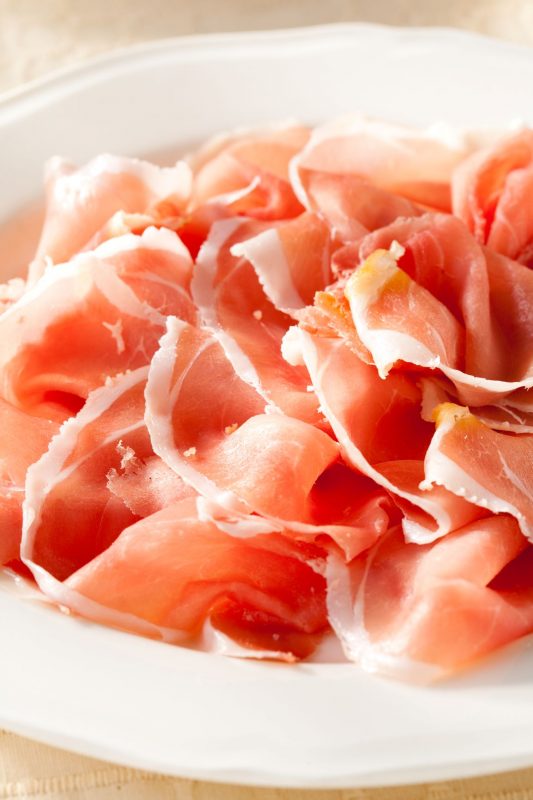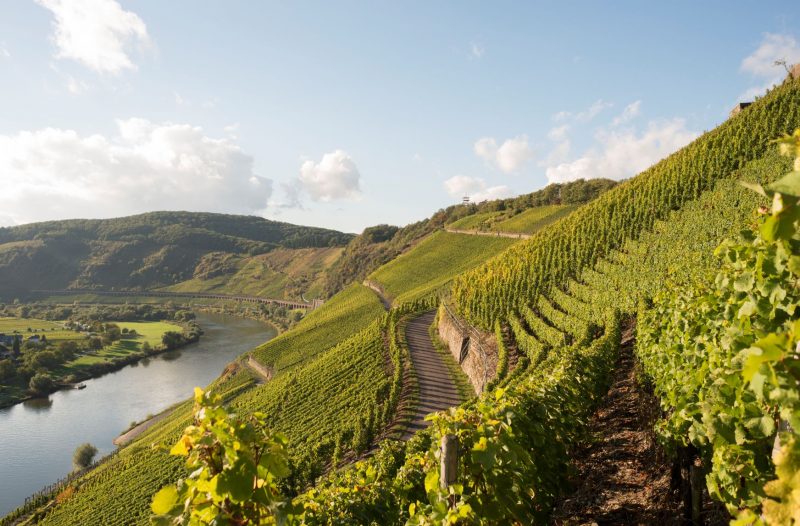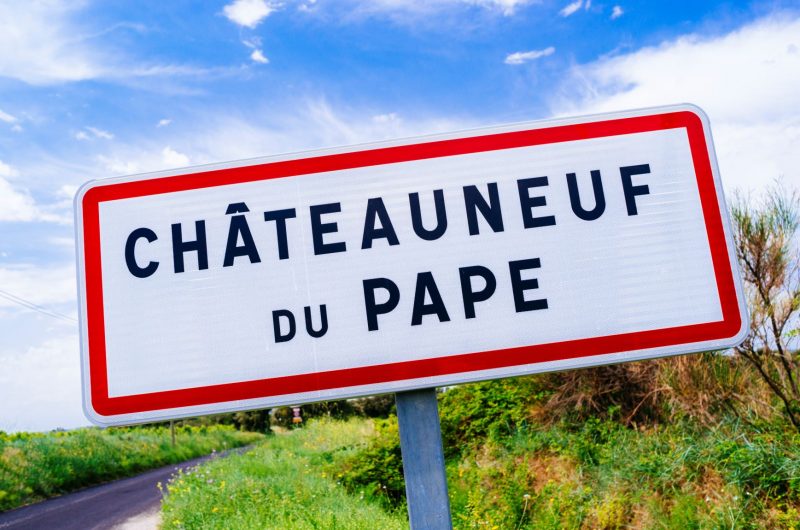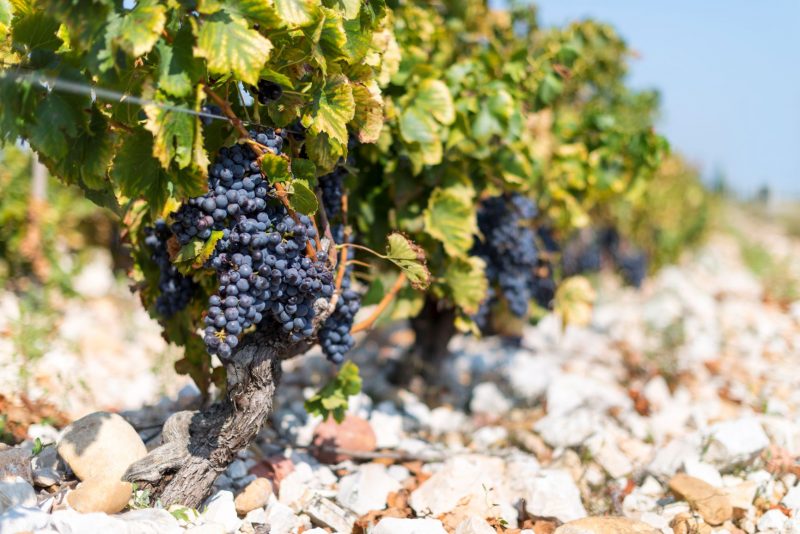Nothing can replace visiting a wine region. Beyond walking the vineyards, it’s the people, the food, the sounds, the smells and the atmosphere that lend colourful context. Great wines manage to encapsulate elements of this. It is what separates them from good ones. And when travel isn’t possible, they are essential.
I have always believed in wine’s ability to transport. Over the last 16 months, I have relied on it. Rather that drinking to escape, I sought a connection with people, places and cultures I was missing and ended up unlocking a comforting flood of memories and emotions.
Here are just three of the wines that transported me.
Domaine de la Vieille Julienne ‘Les Hauts Lieux’ Châteauneuf-du-Pape AOC 2017 France ($142)
When I was 19, I left home and spent three years cycling and working around Europe. Before leaving Canada, I didn’t drink. That changed when I arrived in France. I was a burgeoning wine enthusiast by the time my Mum visited a year later. I parked my bike and together we headed to the Southern Rhône Valley. We stayed in youth hostels, occasionally hitchhiked and gorged ourselves on bread, cheese and cherries pilfered from heavily laden trees. I was enchanted by the fields of lavender, the perfume of wild herbs and the nightly cicada song.
One day, I suggested picnicking in the vineyards of Châteauneuf-du-Pape. I had a vague idea of the wine’s repute. After a torrid 10-kilometre trek, we were greeted by an expanse of gnarly old vines, nestled close to the ground on an uncomfortable bed of pudding stones. My romantic notion of lounging in the vine’s shade was immediately dashed – but my curiosity about the wine was piqued. When I could finally afford to start a cellar, the first bottles I tucked away were Châteauneuf-du-Pape.
That trip was almost three decades ago. Yet when I put my nose in a glass of Domaine de la Vieille Julienne’s Les Hauts Lieux, I am catapulted to another place – and time. Fragrant rosemary and lavender wafting through dense plum, that generosity of fleshy fruit and an enveloping, seductive warmth were all immediately familiar. Sandy-textured tannins and underlying sunbaked crushed stones elicited the landscape. It was the taste of first love. And, in the same sip, it appealed to my older self. This bottling offers a firmness of structure and freshness that Châteauneuf-du-Pape does not always achieve. Rather than a caricature, it is a nuanced interpretation that captures the region precisely at dusk.
—————————
Medici Ermete Concerto, Reggiano DOC 2020 Italy ($20)
During my long love affair with French wine, I barely gave Italy a second glance. It took years to acquire a taste. Now, I am unable to shake my obsession. But it is impossible to pinpoint a single, pivotal bottle. Instead, it is Italy’s diversity of wines and their palpable reflection of the culture that keeps me fascinated.
It hit me recently when I was tasting a bunch of Lambrusco. These frothy reds from the Emilia-Romagna region are patently social. So, with six bottles to open, I enlisted the help of some close colleagues. The wines hailed from Medici Ermete, who just launched a couple of Lambruscos that achieve their effervescence from the traditional method rather than the more common Charmat or tank technique. We assessed the sparklers seriously, appreciating the sophisticated take on Lambrusco.

Then we popped the estate’s Concerto, relaxing and smiling in unison. Unapologetic and unpretentious, this dry Lambrusco has been a staple in British Columbia for years. With a blood purple hue, it’s a chewy mouthful of plums and violets, scrubby bubbles and tangy acidity. (And as of 2020, it’s certified organic).
My appetite was stimulated. I reached for a slice of prosciutto. The salty/sweet morsel coated my mouth. Then the next sip of Lambrusco cleansed it. That symbiotic relationship between wine and food is the essence of Italian gastronomy.
I looked around at my friends reveling in the abundance of the table and recalled my first trip to Bologna, the historic capital of Emilia-Romagna. I arrived on a grey October evening. Despite the somber weather, the streets were alive with locals enjoying the aperitivo all’aperto accompanied by platters of cured meats and cheeses. It was a graphic definition of allegria – a boisterous cheerfulness and optimism. Somehow, I had recreated that moment in my backyard. Happiness washed over me. If an overwhelming sense of joy isn’t transportive, then I don’t know what is.
—————————
Bischöfliche Weingüter Trier Scharzhofberger Riesling Kabinett, Mosel 2019 Germany ($45)
Undoubtedly, it is easier to be transported somewhere you’ve seen with your own eyes. Yet some wines can convey you to their origins even if you haven’t visited.
While I have been lucky enough to travel to Germany, I haven’t stepped foot in the Mosel. By all accounts, pictures don’t do justice to the steepness of the slopes. I want to feel my legs go wobbly as I stand in the precipitous vineyards, and of course wallow in the region’s elegant Rieslings.

I had looked forward to going there in mid-March 2020. It was the first of many trips to be canceled due to the pandemic. Rather than a bitter consolation prize, Bischöfliche’s Scharzhofberger Riesling renewed my anticipation of someday discovering the Mosel with all my senses.
Besides a fine balance of fruity sweetness, piercing acidity and modest alcohol, it paints a picture of Scharzhofberg. This vineyard is apparently one of the coolest in the Saar – a small side valley formed by a tributary from the Mosel River. Lean and racy, it evokes the chilly climate. It’s akin to biting into an apple – red-skinned like the rosy glow of exposed cheeks on a nippy autumn day. Along with a stony backbone echoing the grey slatey soil, it is replete with scents of delicate white flowers that I imagine dot the landscape when spring arrives. And there is enough tension to conjure up the extreme pitch of the hillside. It even made me feel a bit weak at the knees.
As the world slowly opens up, so does the possibility of flying off to foreign destinations again. But will travel return to normal? Besides the COVID19 hangover of stricter health protocols and potentially increased costs, there is another reality. Climate change has not retreated, and jet-setting contributes significantly to one’s carbon footprint. Opening a bottle to be transported rather than jumping on a plane is one way of reducing that.


